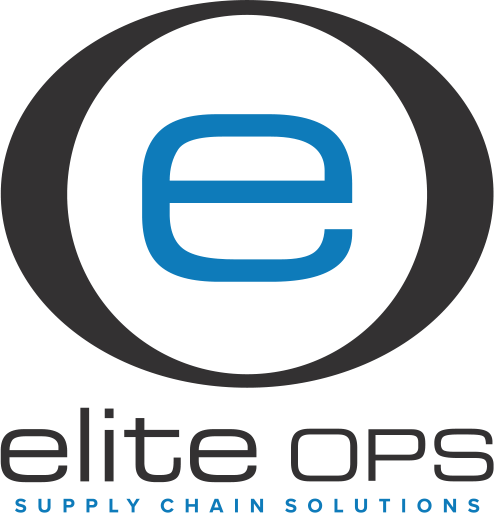Optimizing Your Chosen Supply Chain Model for Maximum Efficiency.
After choosing the right supply chain model for your business, the next step is optimizing it to ensure maximum efficiency. An efficient supply chain improves profitability, customer satisfaction, and overall operational performance. Whether you’ve selected a lean, agile, or hybrid supply chain model, the key to success lies in continuous refinement and process improvements. This blog post will cover essential strategies to help you optimize your supply chain and achieve maximum efficiency.
Leverage Technology and Automation
One of the most effective ways to optimize your supply chain is through the use of technology and automation. Supply chain management software (SCM) helps streamline processes like order tracking, inventory management, and logistics. Automation can also reduce manual errors, speed up operations, and provide real-time insights into your supply chain’s performance.
For example, implementing automated warehouse systems can improve inventory accuracy and reduce the time it takes to pick, pack, and ship orders. Additionally, technologies like RFID (Radio Frequency Identification) and IoT (Internet of Things) sensors can offer real-time tracking of products, ensuring you have full visibility into inventory levels and shipments.
Investing in artificial intelligence (AI) and machine learning (ML) tools can also enable more accurate demand forecasting, helping you optimize inventory levels and reduce excess stock or shortages. By leveraging these technologies, you can enhance your supply chain’s efficiency and responsiveness to market demands.
Related: How a 3PL Can Revolutionize Your Inventory Management and Give You an Edge Over Your Competition.
Enhance Supplier Collaboration
Effective supplier collaboration is crucial to optimizing your supply chain. Strong relationships with suppliers can improve communication, lead to better deals, and reduce lead times. Regular collaboration ensures that both parties are aligned on production schedules, demand forecasts, and delivery timelines.
Establishing clear communication channels and performance metrics with your suppliers can help mitigate risks, avoid disruptions, and improve overall supply chain efficiency. Using collaborative platforms that allow for real-time data sharing, such as cloud-based systems, can further enhance transparency and ensure everyone is working towards the same goals.
Moreover, building strategic partnerships with key suppliers can lead to long-term cost savings, innovation, and improved product quality. Engage in regular performance reviews and maintain an open line of communication to strengthen supplier relationships and optimize your supply chain.
Related: Everything You Need to Know About Sourcing and Procurement.
Implement Real-Time Data and Analytics
Real-time data is a powerful tool for supply chain optimization. By continuously monitoring your supply chain performance, you can make informed decisions that enhance efficiency and reduce waste. Data analytics enables you to track key metrics such as lead times, order accuracy, transportation costs, and supplier performance.
Advanced analytics tools can help identify bottlenecks, forecast future demand, and optimize inventory levels. For instance, predictive analytics can provide insights into seasonal demand fluctuations, allowing you to adjust your supply chain operations accordingly.
Implementing a real-time dashboard to monitor key performance indicators (KPIs) ensures you have access to up-to-date information at all times. This allows you to make quick adjustments, improve responsiveness, and optimize your supply chain model in real-time.
Related: Types of Supply Chain Models Explained.

Optimize Inventory Management
Inventory management plays a critical role in supply chain efficiency. Overstocking can lead to increased holding costs, while understocking can result in stockouts and dissatisfied customers. To optimize inventory management, it’s essential to strike a balance between supply and demand.
One approach is implementing inventory optimization techniques such as just-in-time (JIT) inventory management or economic order quantity (EOQ). JIT ensures that products arrive as needed, minimizing excess inventory. EOQ, on the other hand, helps determine the optimal order quantity to minimize holding and ordering costs.
Additionally, using demand forecasting tools and historical sales data can help predict future inventory needs more accurately. Regularly reviewing inventory turnover rates and adjusting reorder points ensures that you maintain optimal inventory levels without tying up excess capital.
Related: 4 Benefits of a Streamlined eCommerce Supply Chain.
Focus on Continuous Improvement (Kaizen)
Continuous improvement is at the heart of supply chain optimization. The concept of Kaizen, which means “change for the better” in Japanese, involves making incremental improvements over time to enhance operational efficiency.
Encourage a culture of continuous improvement within your organization by regularly reviewing supply chain processes and identifying areas for improvement. This could include streamlining workflows, reducing waste, and enhancing quality control measures.
Regular feedback from employees, customers, and suppliers can also provide valuable insights into areas that need improvement. Implementing small, consistent changes can lead to significant long-term benefits and ensure that your supply chain remains efficient and competitive.
Optimize Transportation and Logistics
Transportation and logistics are key components of any supply chain model, and optimizing these elements can significantly impact efficiency. Start by evaluating your shipping routes, transportation modes, and distribution centers. Identify opportunities to reduce costs and improve delivery times through route optimization, load consolidation, or switching to more efficient carriers.
For businesses with global supply chains, consider diversifying transportation options to mitigate risks from disruptions like port closures, natural disasters, or political instability. Using data analytics to optimize shipping routes and streamline logistics operations can also lead to reduced transit times and lower costs.
Incorporating green logistics practices, such as using fuel-efficient vehicles or optimizing packaging to reduce transportation volume, can further enhance efficiency while contributing to sustainability goals.
Related: How to Adjust Your Supply Chain for a Peak Logistics Strategy.
Track and Measure Performance
Tracking and measuring performance is crucial to ensuring your supply chain model operates at peak efficiency. Establishing clear KPIs related to cost, time, quality, and service levels will provide a benchmark for performance. Regularly monitor these KPIs to identify areas where your supply chain is underperforming and take corrective actions.
Some common KPIs for supply chain optimization include on-time delivery rates, order accuracy, inventory turnover, and cost per unit shipped. By continuously measuring performance, you can identify trends, assess the impact of changes, and ensure that your supply chain model is delivering the desired results.
Related: How Can a 3PL Cut Operational Costs for eCommerce Businesses?
Bottom Line
Optimizing your chosen supply chain model is an ongoing process that requires a strategic approach and a focus on continuous improvement. By leveraging technology, improving supplier collaboration, using real-time data, and implementing efficient inventory management practices, you can enhance the performance of your supply chain and maximize efficiency.
Regularly reviewing your supply chain’s performance, making adjustments as needed, and embracing a culture of continuous improvement will ensure that your business remains competitive in an increasingly dynamic marketplace.
An external fulfillment service partner like Elite OPS is responsible for picking, packing, and shipping orders. Consider such a strategy to reduce shipping and operational costs.
Elite OPS has been a leader in Shipping and Logistics for over 25 years. Contact Us to find out how we can help you Save Time and Money on Procurement as a Service, eCommerce Order Fulfillment, and Kitting and Assembly.
Call 855-553-5490 or Click Here to Request a Quote!
FAQs for Optimizing Your Chosen Supply Chain Model for Maximum Efficiency.
What are the main benefits of optimizing a supply chain model?
Optimizing a supply chain model can lead to improved efficiency, reduced operational costs, better customer satisfaction, faster delivery times, and enhanced flexibility. It also helps mitigate risks, streamline inventory management, and boost overall profitability by making the supply chain more responsive and agile.
How does technology improve supply chain efficiency?
Technology such as supply chain management (SCM) software, automation tools, and real-time data tracking systems enhance supply chain efficiency by providing greater visibility, reducing manual errors, speeding up processes, and enabling better decision-making. Tools like AI, machine learning, and IoT sensors help with demand forecasting, inventory tracking, and process automation.
What role does supplier collaboration play in optimizing the supply chain?
Strong supplier collaboration is essential for aligning goals, improving communication, and ensuring timely deliveries. Effective collaboration leads to reduced lead times, cost savings, and better product quality. By building strong relationships and using real-time data sharing platforms, companies can improve coordination and streamline the supply chain.
How can real-time data help in optimizing a supply chain?
Real-time data enables businesses to monitor key performance indicators (KPIs) like inventory levels, supplier performance, and order accuracy in real time. This allows for faster decision-making, early detection of bottlenecks, and adjustments to meet market demand, leading to enhanced operational efficiency and minimized waste.
What are the best practices for optimizing inventory management?
Best practices include using techniques like just-in-time (JIT) inventory management, economic order quantity (EOQ), and demand forecasting tools. Regularly reviewing inventory turnover, adjusting reorder points, and leveraging historical data can help maintain optimal inventory levels, reducing the risk of stockouts or excess inventory.
What is the Kaizen approach to supply chain optimization?
Kaizen is a philosophy of continuous improvement where small, incremental changes are made over time to improve processes and efficiency. In the context of supply chain optimization, Kaizen involves regularly reviewing workflows, reducing waste, and making adjustments to enhance performance and quality.
How can transportation and logistics be optimized within a supply chain?
Transportation and logistics can be optimized by evaluating shipping routes, consolidating loads, optimizing distribution centers, and choosing efficient carriers. Using data analytics for route optimization, switching to fuel-efficient transportation methods, and integrating green logistics practices can improve efficiency and reduce costs.
What key performance indicators (KPIs) should be tracked for supply chain optimization?
Some important KPIs to track include on-time delivery rates, order accuracy, inventory turnover, transportation costs, lead times, and cost per unit shipped. Monitoring these metrics regularly helps assess the effectiveness of your supply chain and identify areas for improvement.
Can optimizing the supply chain model help businesses become more sustainable?
Yes, optimizing your supply chain can contribute to sustainability by reducing waste, minimizing transportation emissions through route optimization, and adopting eco-friendly practices like green logistics and efficient packaging. Efficient supply chain models use fewer resources and lower the environmental impact of operations.
How often should I review my supply chain performance?
Supply chain performance should be reviewed regularly, at least on a quarterly basis, to ensure that operations remain efficient and meet market demands. Frequent reviews allow for adjustments based on evolving business needs, market conditions, and emerging technologies.








